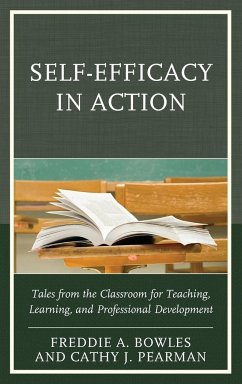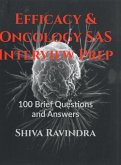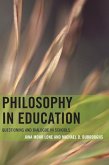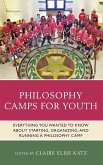Self-Efficacy in Action
Tales from the Classroom for Teaching, Learning, and Professional Development
Herausgeber: Bowles, Freddie A.; Pearman, Cathy J.
Self-Efficacy in Action
Tales from the Classroom for Teaching, Learning, and Professional Development
Herausgeber: Bowles, Freddie A.; Pearman, Cathy J.
- Gebundenes Buch
- Merkliste
- Auf die Merkliste
- Bewerten Bewerten
- Teilen
- Produkt teilen
- Produkterinnerung
- Produkterinnerung
Self-Efficacy in Action provides a practitioner-friendly overview of the concepts, vocabulary, practices, and contexts related to teacher self-efficacy. This book engages readers in the meaningful discussions of practices and purposes of teacher self-efficacy to advance professionalism.
Andere Kunden interessierten sich auch für
![Self-Efficacy Self-Efficacy]() Akthar ParveenSelf-Efficacy41,99 €
Akthar ParveenSelf-Efficacy41,99 €![Building the Self-Efficacy Beliefs of English Language Learners and Teachers Building the Self-Efficacy Beliefs of English Language Learners and Teachers]() Building the Self-Efficacy Beliefs of English Language Learners and Teachers201,99 €
Building the Self-Efficacy Beliefs of English Language Learners and Teachers201,99 €![Efficacy & Oncology SAS Efficacy & Oncology SAS]() Shiva RavindraEfficacy & Oncology SAS40,99 €
Shiva RavindraEfficacy & Oncology SAS40,99 €![Philosophy in Education Philosophy in Education]() Jana Mohr LonePhilosophy in Education116,99 €
Jana Mohr LonePhilosophy in Education116,99 €![What Schools Can Be What Schools Can Be]() Rick AckerlyWhat Schools Can Be97,99 €
Rick AckerlyWhat Schools Can Be97,99 €![Philosophy Camps for Youth Philosophy Camps for Youth]() Philosophy Camps for Youth96,99 €
Philosophy Camps for Youth96,99 €![Invitational Education and Practice in Higher Education Invitational Education and Practice in Higher Education]() Invitational Education and Practice in Higher Education172,99 €
Invitational Education and Practice in Higher Education172,99 €-
-
-
Self-Efficacy in Action provides a practitioner-friendly overview of the concepts, vocabulary, practices, and contexts related to teacher self-efficacy. This book engages readers in the meaningful discussions of practices and purposes of teacher self-efficacy to advance professionalism.
Hinweis: Dieser Artikel kann nur an eine deutsche Lieferadresse ausgeliefert werden.
Hinweis: Dieser Artikel kann nur an eine deutsche Lieferadresse ausgeliefert werden.
Produktdetails
- Produktdetails
- Verlag: Globe Pequot Publishing Group Inc/Bloomsbury
- Seitenzahl: 142
- Erscheinungstermin: 31. Januar 2017
- Englisch
- Abmessung: 235mm x 157mm x 12mm
- Gewicht: 367g
- ISBN-13: 9781475825190
- ISBN-10: 1475825196
- Artikelnr.: 47289305
- Herstellerkennzeichnung
- Books on Demand GmbH
- In de Tarpen 42
- 22848 Norderstedt
- info@bod.de
- 040 53433511
- Verlag: Globe Pequot Publishing Group Inc/Bloomsbury
- Seitenzahl: 142
- Erscheinungstermin: 31. Januar 2017
- Englisch
- Abmessung: 235mm x 157mm x 12mm
- Gewicht: 367g
- ISBN-13: 9781475825190
- ISBN-10: 1475825196
- Artikelnr.: 47289305
- Herstellerkennzeichnung
- Books on Demand GmbH
- In de Tarpen 42
- 22848 Norderstedt
- info@bod.de
- 040 53433511
Freddie A. Bowles is a professor of teacher education at the University of Arkansas and director of the Master of Arts in Teaching Secondary Education program. She is a board member of the Association of Teacher Educators and is active in the American Council on the Teaching of Foreign Languages. Cathy J. Pearman is a professor and department head in Reading Foundations and Technology at Missouri State University. Her research focus is on the self-efficacy of educators and teacher candidates and linking this topic to a conceptual model regarding the resiliency of people undergoing change. This interest co-exists with her long-term research agenda of exploring effects of technology on literacy skill development and comprehension. She is a board member of the Association of Teacher Educators and is active in the American Educational Research Association and the International Reading Association.
Foreword Preface Introduction Chapter 1: "I Was Successful!" Developing
Teacher Candidates' Confidence and Self Efficacy through Reflection and
Supervising Teacher Support Glenda L. Black: Nipissing University, Canada
Chapter 2: Enhancing Efficacy with the Disposition of Care Angela Webster
Smith: University of Central Arkansas Chapter 3: Expanding from Self to
Collective Classroom Efficacy: A Tale of Two Classroom Communities LeAnn G
Putney: University of Nevada Las Vegas, Suzanne H. Jones: Utah State
University, and Brett Campbell: University of Nevada Las Vegas Chapter 4:
Advancing Self-Efficacy with Academic, Pedagogical, Assessment, and Learner
Content Nancy P. Gallavan: University of Central Arkansas Chapter 5: The
Interactive Dual Impact of Teacher Self Efficacy and Creative Self Efficacy
on 21st Century Student Creative and Innovative Performance and
Potentiality Elizabeth Johnson: Eastern Michigan University, Mary Katheryn
Walsh: Eastern Michigan University Chapter 6: Challenge: Efficacious
Teachers View Obstacles as Opportunities Walter Polka: Niagara University,
Amanda Fernandes: Niagara University, Elissa Smith: Niagara University,
Kylie Flynn: Niagara University Chapter 7: Curriculum as a Reflection of
Teacher Self-Efficacy Ashlie Jack: Wichita State University, Kim McDowell:
Wichita State University, Shirley Lefever: Wichita State University Chapter
8: Control and Self-Efficacy Terrell M. Peace: Huntington University
Chapter 9: On the Culture of Collaboration: A Tool for Teacher
Self-Efficacy Jennifer Beasley: University of Arkansas Fayetteville Chapter
10: The Practical Implications of Teacher Self-Efficacy on Collegiality,
Collective Efficacy, and Student Achievement Molly Funk: Core School
Solutions, LLC Final Thoughts Appendix About the Authors
Teacher Candidates' Confidence and Self Efficacy through Reflection and
Supervising Teacher Support Glenda L. Black: Nipissing University, Canada
Chapter 2: Enhancing Efficacy with the Disposition of Care Angela Webster
Smith: University of Central Arkansas Chapter 3: Expanding from Self to
Collective Classroom Efficacy: A Tale of Two Classroom Communities LeAnn G
Putney: University of Nevada Las Vegas, Suzanne H. Jones: Utah State
University, and Brett Campbell: University of Nevada Las Vegas Chapter 4:
Advancing Self-Efficacy with Academic, Pedagogical, Assessment, and Learner
Content Nancy P. Gallavan: University of Central Arkansas Chapter 5: The
Interactive Dual Impact of Teacher Self Efficacy and Creative Self Efficacy
on 21st Century Student Creative and Innovative Performance and
Potentiality Elizabeth Johnson: Eastern Michigan University, Mary Katheryn
Walsh: Eastern Michigan University Chapter 6: Challenge: Efficacious
Teachers View Obstacles as Opportunities Walter Polka: Niagara University,
Amanda Fernandes: Niagara University, Elissa Smith: Niagara University,
Kylie Flynn: Niagara University Chapter 7: Curriculum as a Reflection of
Teacher Self-Efficacy Ashlie Jack: Wichita State University, Kim McDowell:
Wichita State University, Shirley Lefever: Wichita State University Chapter
8: Control and Self-Efficacy Terrell M. Peace: Huntington University
Chapter 9: On the Culture of Collaboration: A Tool for Teacher
Self-Efficacy Jennifer Beasley: University of Arkansas Fayetteville Chapter
10: The Practical Implications of Teacher Self-Efficacy on Collegiality,
Collective Efficacy, and Student Achievement Molly Funk: Core School
Solutions, LLC Final Thoughts Appendix About the Authors
Foreword Preface Introduction Chapter 1: "I Was Successful!" Developing
Teacher Candidates' Confidence and Self Efficacy through Reflection and
Supervising Teacher Support Glenda L. Black: Nipissing University, Canada
Chapter 2: Enhancing Efficacy with the Disposition of Care Angela Webster
Smith: University of Central Arkansas Chapter 3: Expanding from Self to
Collective Classroom Efficacy: A Tale of Two Classroom Communities LeAnn G
Putney: University of Nevada Las Vegas, Suzanne H. Jones: Utah State
University, and Brett Campbell: University of Nevada Las Vegas Chapter 4:
Advancing Self-Efficacy with Academic, Pedagogical, Assessment, and Learner
Content Nancy P. Gallavan: University of Central Arkansas Chapter 5: The
Interactive Dual Impact of Teacher Self Efficacy and Creative Self Efficacy
on 21st Century Student Creative and Innovative Performance and
Potentiality Elizabeth Johnson: Eastern Michigan University, Mary Katheryn
Walsh: Eastern Michigan University Chapter 6: Challenge: Efficacious
Teachers View Obstacles as Opportunities Walter Polka: Niagara University,
Amanda Fernandes: Niagara University, Elissa Smith: Niagara University,
Kylie Flynn: Niagara University Chapter 7: Curriculum as a Reflection of
Teacher Self-Efficacy Ashlie Jack: Wichita State University, Kim McDowell:
Wichita State University, Shirley Lefever: Wichita State University Chapter
8: Control and Self-Efficacy Terrell M. Peace: Huntington University
Chapter 9: On the Culture of Collaboration: A Tool for Teacher
Self-Efficacy Jennifer Beasley: University of Arkansas Fayetteville Chapter
10: The Practical Implications of Teacher Self-Efficacy on Collegiality,
Collective Efficacy, and Student Achievement Molly Funk: Core School
Solutions, LLC Final Thoughts Appendix About the Authors
Teacher Candidates' Confidence and Self Efficacy through Reflection and
Supervising Teacher Support Glenda L. Black: Nipissing University, Canada
Chapter 2: Enhancing Efficacy with the Disposition of Care Angela Webster
Smith: University of Central Arkansas Chapter 3: Expanding from Self to
Collective Classroom Efficacy: A Tale of Two Classroom Communities LeAnn G
Putney: University of Nevada Las Vegas, Suzanne H. Jones: Utah State
University, and Brett Campbell: University of Nevada Las Vegas Chapter 4:
Advancing Self-Efficacy with Academic, Pedagogical, Assessment, and Learner
Content Nancy P. Gallavan: University of Central Arkansas Chapter 5: The
Interactive Dual Impact of Teacher Self Efficacy and Creative Self Efficacy
on 21st Century Student Creative and Innovative Performance and
Potentiality Elizabeth Johnson: Eastern Michigan University, Mary Katheryn
Walsh: Eastern Michigan University Chapter 6: Challenge: Efficacious
Teachers View Obstacles as Opportunities Walter Polka: Niagara University,
Amanda Fernandes: Niagara University, Elissa Smith: Niagara University,
Kylie Flynn: Niagara University Chapter 7: Curriculum as a Reflection of
Teacher Self-Efficacy Ashlie Jack: Wichita State University, Kim McDowell:
Wichita State University, Shirley Lefever: Wichita State University Chapter
8: Control and Self-Efficacy Terrell M. Peace: Huntington University
Chapter 9: On the Culture of Collaboration: A Tool for Teacher
Self-Efficacy Jennifer Beasley: University of Arkansas Fayetteville Chapter
10: The Practical Implications of Teacher Self-Efficacy on Collegiality,
Collective Efficacy, and Student Achievement Molly Funk: Core School
Solutions, LLC Final Thoughts Appendix About the Authors








